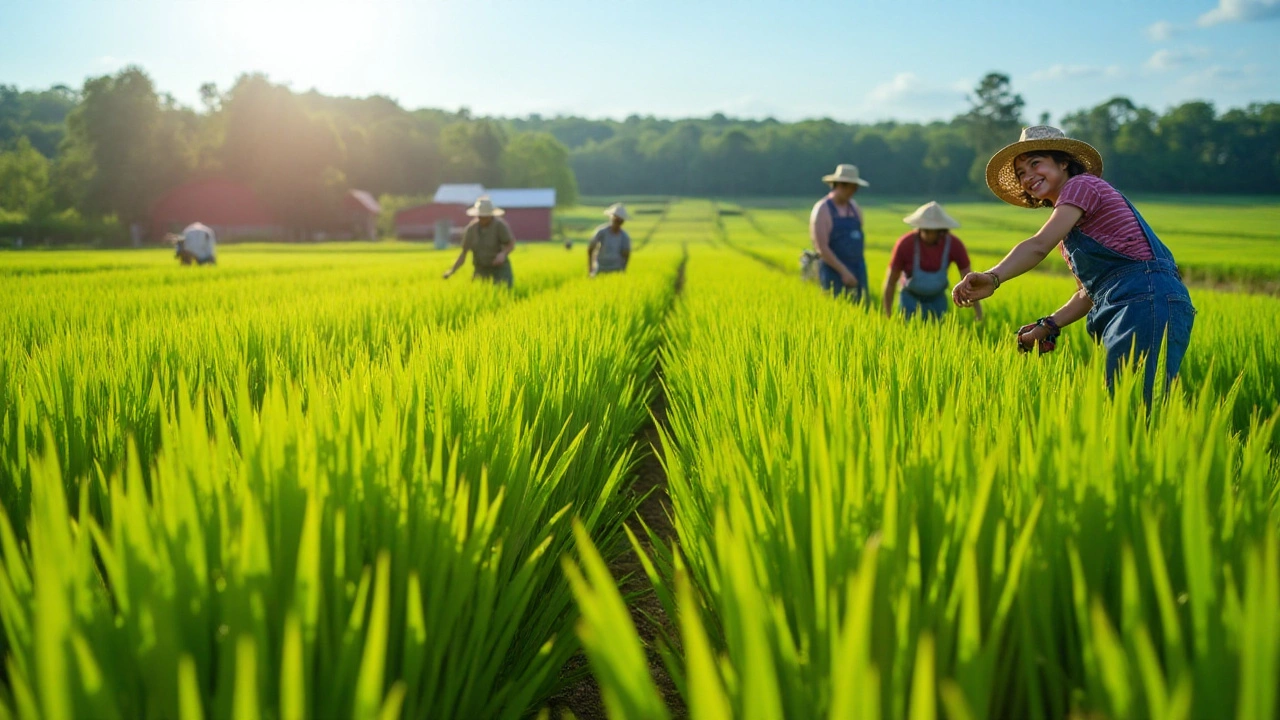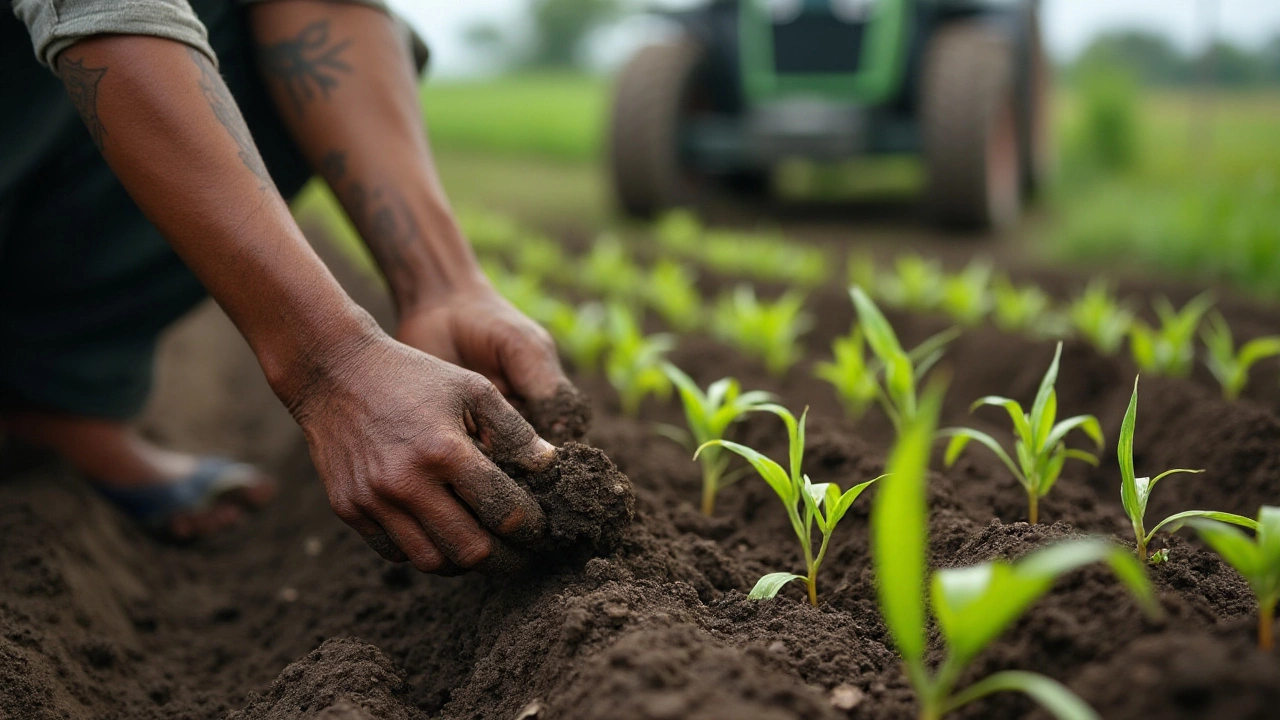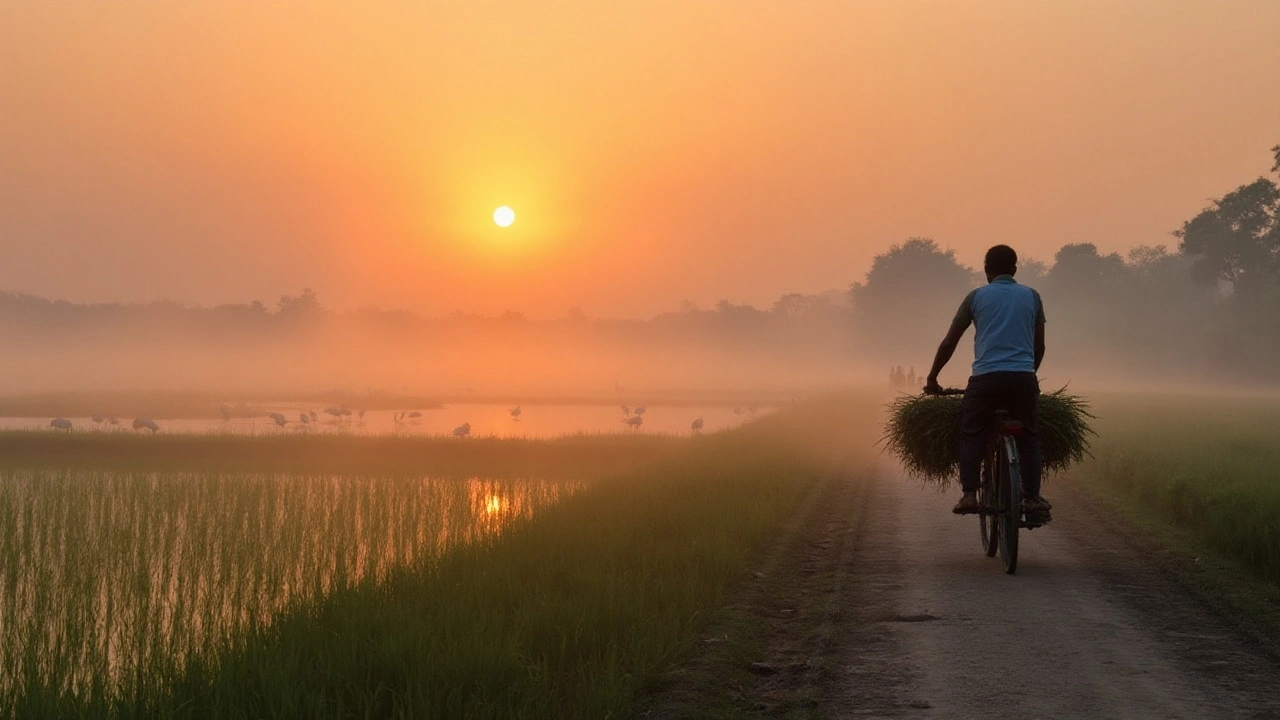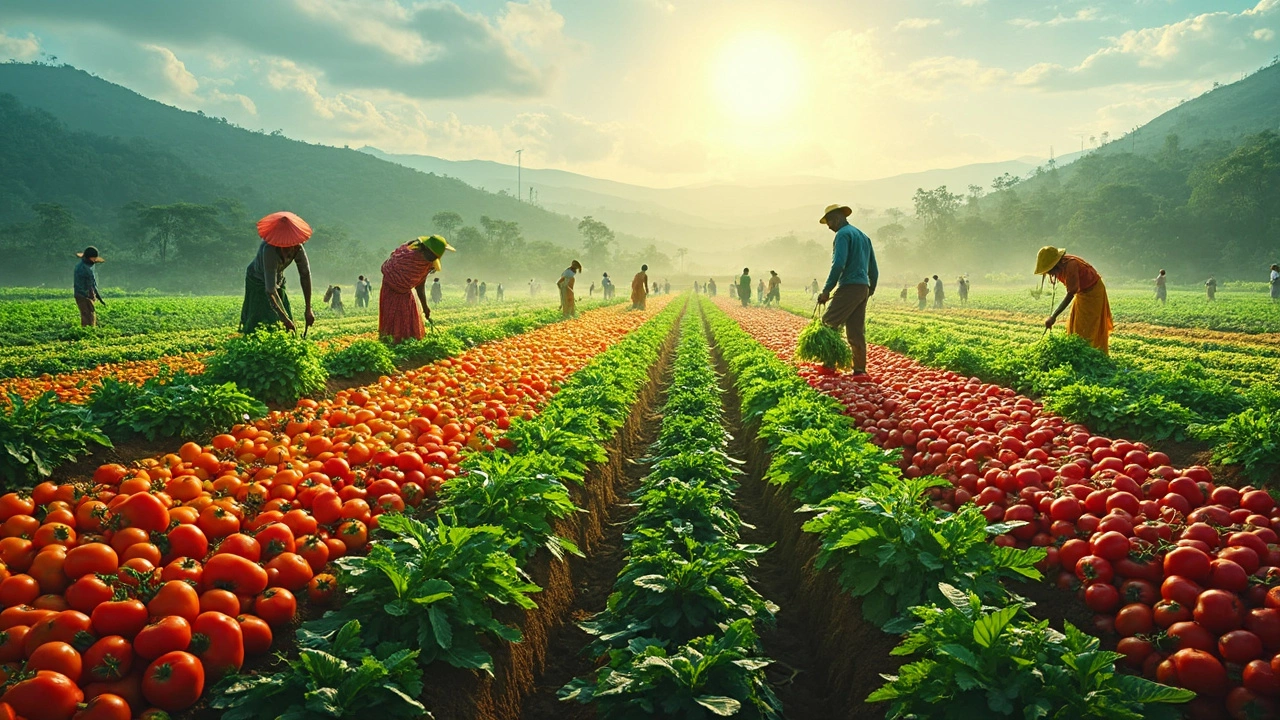Growing Rice in America: Possibilities and Practices

Many might find it surprising, but America is more than just the land of corn and cotton when it comes to agriculture. Among its rich array of crops, rice holds a special, if less publicized, place. Diverse landscapes and climates make certain areas of the United States perfect for rice cultivation, challenging the traditional notion that rice can only thrive in the lush terrains of Asia.
A successful rice crop hinges on understanding the plant's need for specific conditions. From the muggy deltas of the South to the dry heat of California, American farmers have innovated to overcome geographical challenges, marking territories ripe for rice cultivation.
Within this context, learning from both local experience and centuries-old practices from overseas, American farmers are scripting a unique narrative in rice production. This tale is characterized by challenges, adaptations, and a continuous quest for sustainable practices that ensure the future of rice cultivation in the US remains promising.
- Understanding Rice Growing Conditions
- Regions in America Suitable for Rice Cultivation
- Techniques and Best Practices
- Challenges in American Rice Farming
- Future of Rice Cultivation in the US
Understanding Rice Growing Conditions
When envisioning ideal conditions for growing rice, one might think of sprawling paddies in tropical regions, yet the requirements are more versatile than they appear. Rice thrives in warm climates, making it an adaptable crop in various settings across the globe. Temperature plays a crucial role, and optimal growth generally occurs between temperatures of 70 to 86 degrees Fahrenheit. High humidity levels are also beneficial since rice fields often involve standing water, which helps maintain this environmental moisture.
Water management is perhaps the most pivotal aspect when it comes to cultivating rice. This crop is unique in its ability to grow in flooded conditions, which helps control weeds and pests, adding a natural line of defense against threats that could otherwise harm the plants. However, successful farmers understand that proper drainage and irrigation create a balance that prevents both drought stress and over-saturation, each of which can be detrimental. Flooding fields during the growing season helps ensure the rice has plenty of water, but letting fields dry out just before harvest allows the grain to mature and prepare for collection.
The soil type also holds importance; rich, clay-like soils that retain and hold water work wonders for rice farming. That being said, rice is highly versatile, and with modern techniques such as alternate wetting and drying, it's possible to modify conditions to suit less-than-perfect soil types. Add to this mix the critical role of selecting the right rice variety to match climate and soil conditions and you begin to realize how choice and adaptability pave the way to successful rice cultivation. With the advances in agriculture, farmers now have access to improved rice varieties that not only increase crop yields but also resist diseases and pests.
To get a deeper perspective, consider the insight offered by acclaimed agronomist Dr. Sabine Tarun, who once noted,
"Farmers are essentially proactive scientists, constantly experimenting and adjusting to nature's variables to cultivate rice that fits their unique climates and topographies." This emphasizes the ongoing need for understanding and adaptability in rice cultivation.Such wisdom reflects the need for continuous learning and adaptation, especially important in places adapting this Asian staple into their agricultural repertoire, like parts of America.
For budding rice farmers in America, understanding these conditions not only highlights the complexity but also showcases the opportunities. Regions such as Louisiana and Arkansas, with naturally conducive environments, have long harnessed their attributes to cultivate high-quality rice. With careful planning and understanding of these conditions, it is indeed quite plausible to cultivate this cherished grain across a wider spectrum of American farmland, blending traditional knowledge with modern innovation for a successful harvest.
Regions in America Suitable for Rice Cultivation
Rice farming in the United States, though less talked about than its Asian counterparts, boasts a rich history and significant importance. The primary regions for growing rice in America include the Southern states, particularly Arkansas, Louisiana, Mississippi, Missouri, and Texas. These areas boast ideal environmental conditions for rice farming, with the Mississippi Delta being the crown jewel due to its fertile alluvial soil and naturally humid climate. Arkansas, in particular, stands out by producing over 50% of the nation's rice, leveraging its prime growing conditions to become a leader in the field.
Each region brings its own unique touch to rice cultivation. California's Sacramento Valley offers a distinct contrast with its Mediterranean climate, facilitating the growth of varieties such as japonica rice, a short-grain strain different from the indica rice found in the South. The Valley's dry summers and wet winters work beautifully with rice, adapting techniques and irrigation systems that borrow from its Asian roots.
Farmers across these key regions have adopted clever ways to embrace technological advancements to manage water more efficiently, a step crucial in facing potential climate challenges. For instance, in Louisiana, integrated cutting-edge water management systems help in sustaining rice farming amid unpredictable weather patterns.
"Rice's ability to adapt to different micro-climates within these key regions showcases its resilience and the innovative spirit of American farmers," says Dr. Emily Crawford, an expert in sustainable agriculture.
Key Insights from Cultivation Practices
The span of geographical diversity offers distinct cultivation practices tailored to regional specifics while maintaining core best practices needed for successful rice farming. Tetraploid rice grows prominently in Texas, known for being more resilient to drought thanks to its genetic makeup, thus proving to be an exciting prospect in rice breeding. Here, flood irrigation remains a traditional technique, but there's a growing shift towards using more efficient methods like the Alternate Wetting and Drying (AWD) technique, which dramatically saves water – a resource becoming increasingly precious.| State | Annual Rice Production (Tonnes) | Main Rice Variety |
|---|---|---|
| Arkansas | 8,000,000 | Long-grain rice |
| California | 4,000,000 | Medium and short-grain rice |
| Louisiana | 2,100,000 | Long-grain rice |

Techniques and Best Practices
Growing rice in America is a venture that merges traditional wisdom with contemporary agricultural innovation. To successfully cultivate this staple crop, farmers must navigate a range of practices that cater to both the regional climate and the evolving technological landscape. At the core, understanding the specific rice cultivation conditions, such as adequate water supply and the right type of soil, is crucial. Rice thrives best in sandy loam and clay soil, so choosing the appropriate location often dictates the difference between success and failure. In the Mississippi Delta, for example, precision leveling techniques are used to ensure fields are evenly irrigated, preventing water waste and promoting healthy crop growth.
As climate challenges mount, many farmers have adopted innovative water management techniques, such as Alternate Wetting and Drying (AWD), which significantly reduces water usage. This method works by deliberately allowing the rice field to dry intermittently rather than maintaining continuous flooding. Such practices not only conserve water but also reduce methane emissions.
According to the International Rice Research Institute, "AWD can reduce water usage by up to 30% without compromising yield."Another modern method includes utilizing GIS technology to analyze field variations, aiding in precision farming that optimizes input usage and enhances yields.
Rice farmers must also consider the timing of planting, which is generally aligned with regional weather patterns. In California, where rice is predominantly grown, the timing between late April and early May is ideal, conditioned by spring rains and sufficient drying periods post the wet season. The variety of rice also matters; long grain rice suits Arkansas and the Southern US, while California favors short and medium grain varieties, influenced by its cooler nights.
Integrated pest management (IPM) strategies have gained traction, focusing on combining biological control with cultural practices to manage pests effectively. Encouraging natural predators and reducing chemical use are key in maintaining ecological balance. American rice farmers often employ rotational cropping, where different crops are planted alternatively, disrupting pest life cycles and enhancing soil fertility. For example, rotating rice with soybeans or oats enriches the soil with nitrogen, fostering conditions conducive to healthier rice plants.
The use of modern machinery and technology also plays a pivotal role. Harvesters equipped with GPS systems allow precise field tracking, ensuring maximal crop retrieval with minimal waste. Innovative storage techniques, like airtight storage methods, help prolong the shelf life of harvested rice, safeguarding it from pests and moisture. The integration of such best practices ensures that rice farming in the US not only remains sustainable but also continues to adapt to the challenges posed by an ever-changing environment.
Challenges in American Rice Farming
Venturing into the world of rice farming in America is an endeavor filled with both promise and hurdles. The geographical diversity of the United States poses unique challenges that vary significantly from one coast to the other. While regions like Arkansas, Louisiana, and California are known for their rice cultivation, each has distinct climate concerns to navigate. The Southern United States, for instance, battles with unpredictability in rainfall which can have drastic effects on crop yield. In California, water scarcity is a pressing issue, with the intricate balance between agriculture and urban development further complicating resource allocation.
Beyond climate, American farmers confront challenges associated with soil health and pest management. The intensive nature of rice farming often leads to soil degradation if proper crop rotations and sustainable practices are not maintained. Pests and diseases, like the rice water weevil or sheath blight, pose significant threats to crops as well, demanding vigilant monitoring and timely interventions. Moreover, as global temperatures shift, emerging pests and diseases are becoming more of a reality, leading to an ever-evolving battlefield for farmers.
The modern farmer must also grapple with economic pressures and regulatory frameworks that sometimes feel like trying to hit a moving target. Fluctuations in the global rice market mean that prices can be unpredictable, and farmers must adapt swiftly to economic changes. Additionally, access to modern technology and equipment can be uneven, especially for smaller farms operating on tight margins. Regulations surrounding water use, environmental protection, and labor standards add additional layers of complexity that require careful navigation. In this context, the expertise and guidance offered by agricultural extensions and research bodies become invaluable.
According to a study by the University of Arkansas, "Adopting precision agriculture techniques can significantly enhance yield while minimizing resource input, yet the initial cost remains a barrier for many."
In the future of American rice farming lies the potential for technological integration to mitigate some of these challenges. The rise of precision agriculture, AI-assisted pest monitoring, and data-driven irrigation systems are harbingers of a transformation in farming practices. However, the transition requires investment and knowledge-sharing that not all farms can readily afford. Governmental support and cooperative models could play a crucial role in making technological advancements accessible to everyone.
Ultimately, while the challenges in American rice farming are deeply rooted and multifaceted, the resilience and ingenuity of farmers continue to drive the industry forward. Understanding these challenges is the first step towards crafting solutions that ensure sustainable and profitable rice production for future generations. The conversation around how to tackle these hurdles is vital, with collective effort required from farmers, policymakers, and scientific communities to continue growing rice in America effectively.

Future of Rice Cultivation in the US
The future of rice cultivation in America is a topic brimming with potential and innovation. As climate changes reshape agricultural landscapes globally, American rice farmers are looking towards adaptable strategies that promise both sustainability and increased yield. Given the diverse climates across the United States, rice farming presents unique opportunities, ready to be honed by agricultural advancements. The drive towards more environmentally-friendly practices also adds momentum, as farmers seek to lower water usage and increase efficiency in rice production.
Historically, American states like Arkansas, California, and Louisiana have been the frontrunners in rice production, thanks to their favorable conditions. However, with technological advances and a deeper understanding of rice varieties, the potential for expanding rice farming beyond these traditional areas is significant. Methods such as precision agriculture and the use of drones and AI in farming operations are expected to bring about a shift towards more efficient cultivation methods. According to an article from the University of Arkansas, "The application of AI in rice farming is not just about increasing yields, it’s about creating a balance between agriculture and environmental stewardship."
The market demand for rice is projected to grow, driven by population increases and dietary shifts favoring rice as a staple. This offers lucrative prospects for domestic farmers if they continue to innovate and adapt. An interesting dimension to consider is the cultivation of specialty rice varieties, such as organic and aromatic rice, which could capture niche markets domestically and internationally. Customized cultivation strategies for these premium types could significantly amplify the diversity and resilience of rice as a crop in American agriculture. American rice, with its unique characteristics, could indeed become a globally recognized brand, opening up international markets.
The role of government policies and subsidies will increasingly influence this sector's evolution. Continued research funding and support for sustainable practices are critical in securing the future of rice farming. The USDA’s support for sustainable agriculture practices underscores the trend towards environmentally-conscious farming. Additionally, collaborations between universities and farming communities have already shown promising results in testing new rice-growing techniques and water management strategies. Rice farming, aligned with sustainable practices, is no longer a mere dream but an achievable reality.
Emerging challenges like changing climate patterns, water scarcity, and pest management remain hurdles to overcome. However, the resilience and innovativeness of American farmers continue to offer solutions and inspire hope. By leveraging knowledge, technology, and policy support, the future of rice cultivation looks not just viable but thriving. The coming years will likely see a transformation where rice is not just a part of the agricultural landscape but a significant contributor to food security and economic prosperity within the US and beyond.





